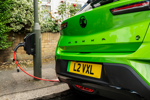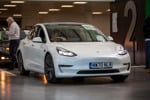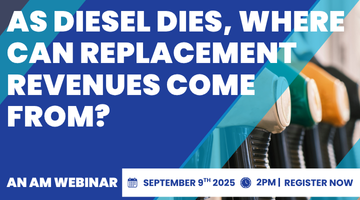Manufacturers have been moving to separate their car showrooms from van showrooms, if not in terms of premises, then certainly in terms of dedicated sales and aftersales staff.
Volkswagen Commercial Vehicles (VWCV), one of the early adopters, believes its strategy of having separate showrooms on separate sites is the right approach – proven by its network composite figures.
Its 64 van dealerships are split between 31 centres on different land to the car showroom and 33 on the same land. Of the 33, half share the same showroom as the car franchise.
Simon Elliott, VWCV managing director, says: “Our standalone sites are slightly more profitable than our shared centres. Our
strategy is right and we will continue to push in that direction.
“Although their overheads are higher, their profits are also higher because of the level of focus, expertise and bespoke staff who are only interested in commercial vehicles.
“If they have no van customers, they can’t look at cars. They have to start prospecting. It’s all about focus – if they only have a CV hat on, this is where they will live or die.”
The standalone sites’ average return on sales is close to 1%, compared to the shared sites’ 0.5%.
Elliott claims every van dealer is in profit, despite sales falling last year by 4% to 29,355 units.
“That was in a market down 23%,” he says. “Our market share rose from 8% to just under 9%. We did it with integrity – we didn’t distress the brand. And we won’t get into the gutter with the marketing of some of our rivals.”
Elliott is looking to maintain 9% share this year in a market he expects to fall by 22-23%. It means sales volumes will drop to just over 20,000 units.
Market share
His bullish position on market share is underpinned by a positive order bank of “several thousand” units.
But it’s not sales at any cost – Elliott claims he will walk away from low margin business, and adds: “We will not slaughter residual values just because we have set out a goal of
certain volume.”
VWCV’s long-term policy is to have a network of standalone sites, but it will not force dealers into making an immediate change.
“We have to have dealers that are viable straight away – they can’t change and then be in loss for a number of years because of the investment,” Elliott says. “They will
change when the time is right.”
The right time is not during a recession. The economic downturn has also persuaded VWCV to suspend its plans for network expansion.
It has around 11 open points, but they depend on volumes – a fall in sales reduces the need to fill gaps in the network.
Most conversations with prospective dealers have stopped, though four are ongoing and likely to result in appointments later this year.
VWCV has boosted its support for the van network, including enhanced terms on demonstrators, such as more de-fleet bonus to help dealers sell them on. It is also registering some demonstrators itself so dealers don’t have to fund them – a big help to cashflow.
Cashflow support
Additional support on cashflow includes interest-free payments and no-cost funding for used vans. Dealers can also display VWCV’s used vans in their showroom.
It is also putting more emphasis on service retail plans and the ability for dealers to cover their overheads from their service business (i.e. absorption).
“Dealers have to be focused on liquidity and if we are adding to their burden, we will look at ways of helping,” says Elliott.
“The left hand is looking at reducing costs, such as stock-ing on new and used vans and depreciation; the right hand is looking at increasing revenue from sales and service.”
However, success isn’t all about how much support VWCV will give to the network; nor is it about the company providing the big fleet deals which account for 25% of volumes.
Elliott wants to see dealers penetrating deeper into their local business territories.
“Successful dealers’ roots go deep – local fleet, rental, business users and used vans. They have to focus on selling within their own territory because these customers will come back for service,” he says.
“Fleet volume should be the icing on the cake, not driving the
business.”













Login to comment
Comments
No comments have been made yet.